Montalcino is a gem of history and art, buried deep in the hills of the Val D'Orcia. This medieval city immediately welcomes the visitor into its old medieval layout, scored as it is with straight, steep streets which have breathtaking panoramas waiting at the top.
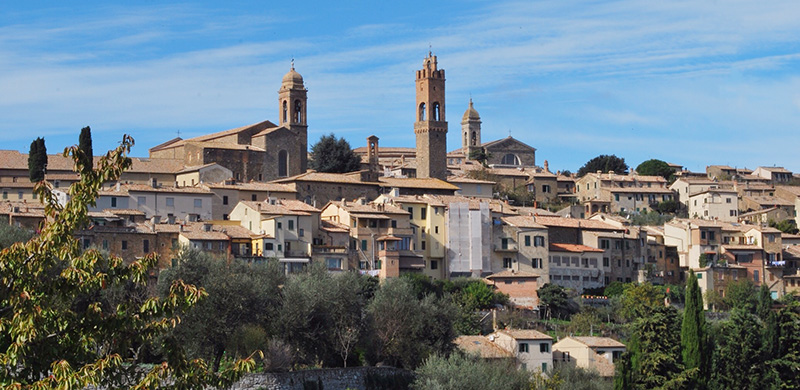
Montalcino is also known as the town that produces Brunello di Montalcino, one of the most famous wines in the world. In the mid-nineteenth century, a group of winemakers began to experiment with the indigenous Sangiovese grape, and came up with a wine able to withstand years of aging and improve over that time. The city is full of wine shops, with many opportunities for wine tasting.
Montalcino has enjoyed economic growth due to the increasing popularity of the town's famous wine Brunello di Montalcino. The number of producers of the wine has grown from only 11 in the 1960s to more than 200 today, producing some 330,000 cases of the Brunello wine annually.
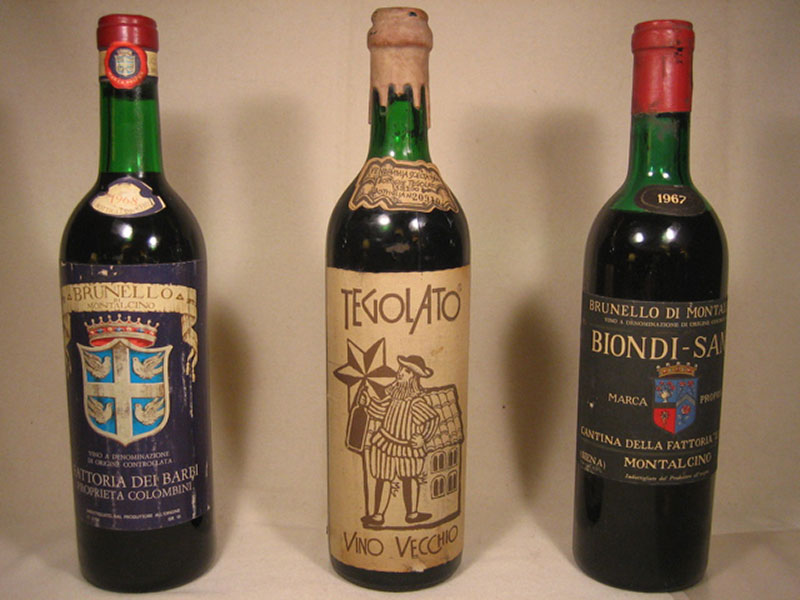
Brunello was the first wine to be awarded Denominazione di Origine Controllata e Garantita (DOCG) status. In addition to Brunello di Montalcino, which must be aged five years prior to release, 6 years for the Riserva, Rosso di Montalcino (DOC), made from sangiovese grosso grapes and aged one year, and a variety of Super Tuscan wines are also produced within the comune, as well as the Moscadello sweet white wines for which it was most famous until the development of the Brunello series.
The first walls of the town were built in the 13th century. The historic center of Montalcino is dominated by its imposing citadel, built in 1361. It became the Sienese Republic's last line of defense against Medici expansion.

Built atop the highest point of the town, the fortress was designed with a pentagonal layout by the Sienese architects Mino Foresi and Domenico di Feo. The fortress incorporates some of the pre-existing southern walls, the pre-existing structures including the keep of Santo Martini, the San Giovanni tower and an ancient basilica which now serves as the fortress chapel. Though the town itself was eventually conquered, the fortress itself never submitted, an admirable feat, considering the size of the Sienese and Florentine forces that besieged Montalcino at varying intervals.
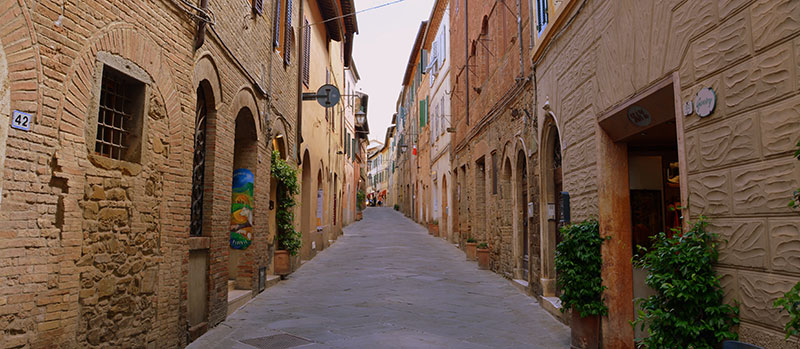
The narrow, short street leads down from the main gate of the fortress to the Chiesa di Sant'Agostino with its simple 13th-century, Romanesque façade. Adjacent to the church is the former convent, now the Musei Riuniti, both a civic and diocesan museum, housing among its collections: a wooden crucifix by an unknown artist of the Sienese school, two 15th century wooden sculptures, including a Madonna by an anonymous artist, and several terracotta sculptures attributed to the Della Robbia school. The collection also includes a St Peter and St Paul by Ambrogio Lorenzetti and a Virgin and Child by Simone Martini. There are also modern works from the early 20th century in the museum.
Montalcino's main square is the Piazza del Popolo, where you find the town hall: Palazzo Comunale, also known as the Palazzo dei Priori. This thirteenth-century building is adorned with the coats-of-arms of the numerous governors who have run the city over the course of the centuries. Its slender structure is flanked by a tall belltower, which might almost look like a watchtower were it not for its campanone (big bell), whose rings beat out the rhythm of life in Montalcino even today.
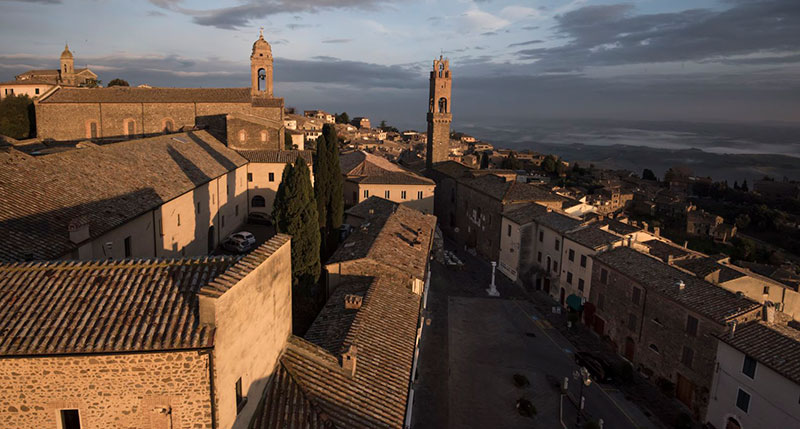
Close by is a Renaissance-style building with six round arches, called La Loggia, for which construction began at the very end of the 14th century and finished in the early 15th, but which has undergone much restoration work over the subsequent centuries.
The Duomo (Cathedral of the Holy Savior), dedicated to San Salvatore, was built originally in the 14th Century, but now has a 19th-century Neoclassical façade designed by the Sienese architect Agostino Fantasici.
The Civic Diocescan Museum of Sacred Art occupies part of the former convent of Sant'Agostino, and is home to one of the richest collections of painting and wooden sculpture from the Sienese school. As for sacred buildings, the Neoclassical Cathedral is worth highlighting, as are the Sanctuary of the Madonna del Soccorso, and Sant'Egidio - the "Sienese" church.
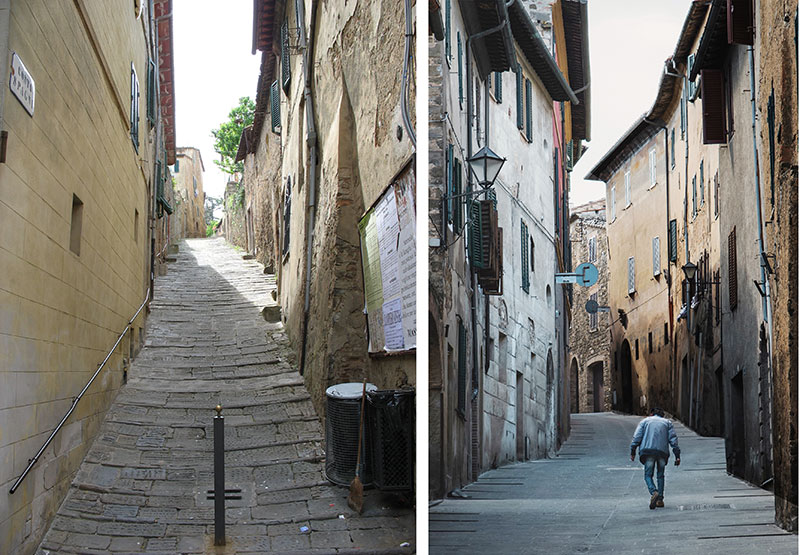
The main street is Via Giuseppe Mazzini, which runs through Piazza del Popolo, then changes name to Via Giacomo Matteotti, then again, to Via Soccorso Saloni.
Montalcino is divided, like most medieval Tuscan cities, into quarters called contrade, Borghetto, Travaglio, Pianello and Ruga, each with their own colors, songs and separate drum rhythms to distinguish them. Twice a year they meet together in a breath taking archery contest under the walls of the Fortezza, conducted in Medieval dress, with lords and ladies of each contrada who accompany the proceedings.
The 13th-century church of San Francesco in the Castlevecchio contrada has undergone several renovations. It contains 16th-century frescoes by Vincenzo Tamagni.
It's absolutely worth a little effort to explore the stunning surrounding countryside. Near Castelnuovo dell'Abate rises the splendid Abbey of Sant'Antimo, a monumental structure from the thirteenth century and one of the finest examples of the French Romanesque in Italy.

The land around Montalcino is typified by a thick covering of forest, clearing at times for the traditional cultivation of vines and olive trees on the hillslopes that have helped fix the Val D'Orcia in the world's imagination. It is thanks to these very views that Montalcino, along with the entire valley, was recognised as a World Heritage Site in 2004.
Typical Produce
Alongside the famous Brunello di Montalcino, the most exquisite fruits of the local countryside include honey, extra virgin olive oil, charcuterie and cheese, all of which can be tasted in the many traditional restaurants and wine merchants.
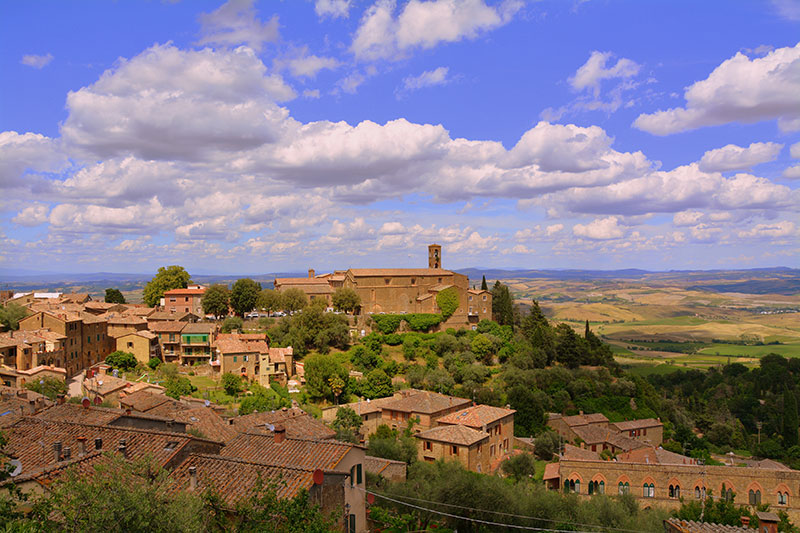
The hill upon which Montalcino sits has probably been settled since Etruscan times. Its first mention in historical documents in 814 AD suggests there was a church here in the 9th century, most likely built by monks associated with the nearby Abbey of Sant'Antimo. The population grew suddenly in the middle of the tenth century, when people fleeing the nearby town of Roselle took up residence in the town.
The town takes its name from a variety of oak tree that once covered the terrain. The very high site of the town offers stunning views over the Asso, Ombrone and Arbia valleys of Tuscany, dotted with silvery olive orchards, vineyards, fields and villages. The lower slopes of the Montalcino hill itself are dominated by highly productive vines and olive orchards.
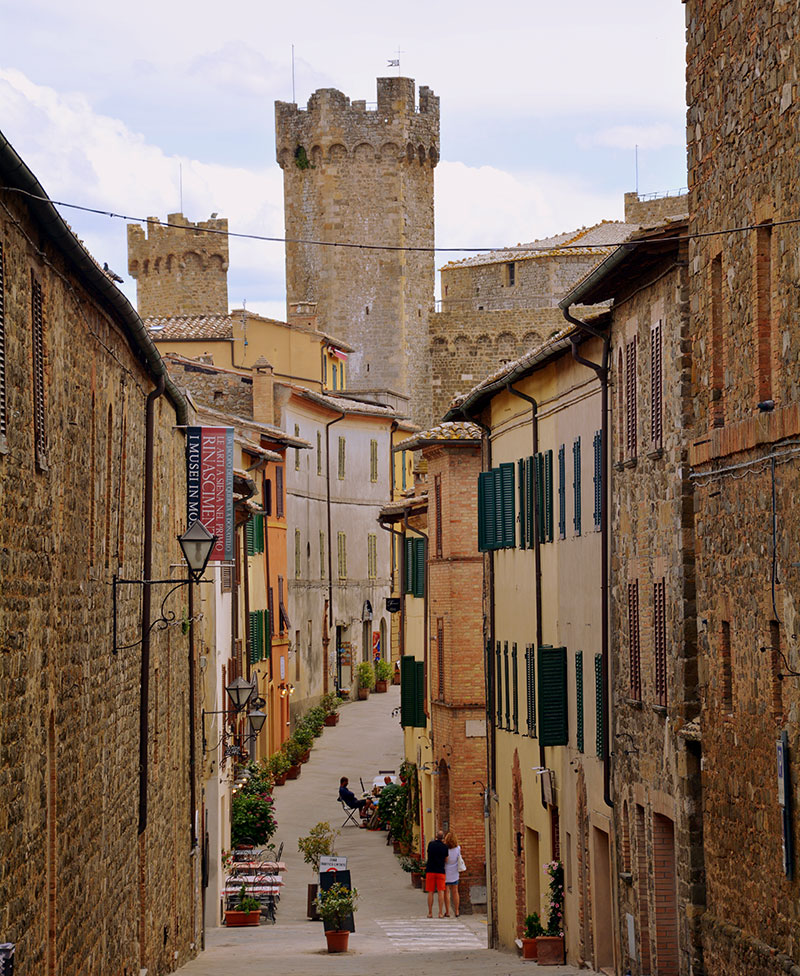
During medieval times the city was known for its tanneries and for the shoes and other leather goods that were made from the high-quality leathers that were produced there. As time went by, many medieval hill towns, including Montalcino, went into serious economic decline.
Like many of the medieval towns of Tuscany, Montalcino experienced long periods of peace and often enjoyed a measure of prosperity. This peace and prosperity was, however, interrupted by a number of extremely violent episodes.
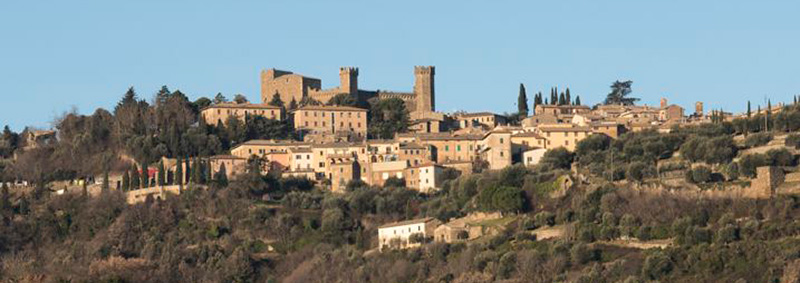
During the late Middle Ages it was an independent commune with considerable importance owing to its location on the old Via Francigena, the main road between France and Rome, but increasingly Montalcino came under the sway of the larger and more aggressive city of Siena.
As a satellite of Siena since the Battle of Montaperti in 1260, Montalcino was deeply involved and affected by the conflicts in which Siena became embroiled, particularly in those with the city of Florence in the 14th and 15th centuries, and like many other cities in central and northern Italy, the town was also caught up in the internecine wars between the Ghibellines (supporters of the Holy Roman Empire) and the Guelphs (supporters of the Papacy). Factions from each side controlled the town at various times in the late medieval period.

Once Siena had been conquered by Florence under the rule of the Medici family in 1555, Montalcino held out for almost four years, but ultimately fell to the Florentines, under whose control it remained until the Grand Duchy of Tuscany was amalgamated into a united Italy in 1861.
The preceding information is from Wikipedia and the Tuscany Official Tourist Information website.